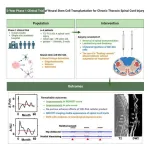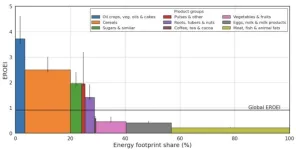(Press-News.org) PHILADELPHIA – Following a several-year lull during the pandemic, cases of whooping cough are increasing across the United States. As of Nov. 30, early U.S. data show over 28,000 cases reported this year, or six times as many as in the same period in 2023, according to the Centers for Disease Control and Prevention (CDC).
Whooping cough or pertussis, a highly contagious bacterial infection of the respiratory tract, was one of the most common childhood diseases in the 20th century and a major cause of childhood mortality, according to the CDC. Until a pertussis vaccine became available in the 1940s, over 200,000 cases were reported annually, the CDC says.
As cases rise, a nationally representative panel survey by the Annenberg Public Policy Center of the University of Pennsylvania finds that many in the public are not familiar with symptoms of the disease. Almost a third of respondents (30%) are not sure if pertussis is the same as whooping cough (it is) and not sure (30%) whether a vaccine exists to prevent it (it does).
The CDC recommends vaccination for everyone against whooping cough, which is spread by coughing or sneezing. The illness may first resemble a common cold but can produce “rapid, violent, and uncontrolled coughing fits” a week to two weeks after symptoms appear. People who are vaccinated may still get whooping cough but generally have a milder illness.
Safety reviews of two main types of whooping cough vaccines – Tdap (tetanus, diphtheria, acellular pertussis), for those 7 years and older, and DTaP (diphtheria, tetanus, and acellular pertussis) for infants and young children – show both to be safe and effective, the CDC reports.
“The MMR vaccine, which covers measles, mumps and rubella, is colloquially referred to as the measles vaccine,” said Kathleen Hall Jamieson, director of the Annenberg Public Policy Center (APPC). “Instead of speaking about the DTaP and Tdap vaccines and using the unfamiliar term ‘pertussis,’ public health communicators should reiterate that our best defense against whooping cough is the whooping cough vaccine.”
What does Tdap protect against?
The Tdap vaccine (tetanus, diphtheria, pertussis) is recommended by the CDC to be given to everyone age 7 and older, including those who are pregnant to protect their newborn.
Yet only half or less of Americans know which diseases the Tdap vaccine protects against. According to the latest Annenberg Public Policy Center health survey, when a nationally representative sample of U.S. adults is provided with a list of diseases and asked which of these diseases the Tdap vaccine protects against, a third of respondents (34%) say they are not sure.
Just 44% selected pertussis or whooping cough, 47% selected diphtheria, and 50% selected tetanus, all correct. The vast majority of respondents rightly rejected several incorrect choices – just 13% said Tdap protects against polio, 10% said pneumococcal disease such as pneumonia or meningitis, 3% selected dengue, and 1% chose Zika.
In total, almost 3 in 10 people (29%) knew all three diseases that the Tdap vaccine protects against and chose none of the incorrect ones.
The survey finds that 85% of respondents say they would be likely to recommend that a child aged 11 to 12 years old in their household or an adult in their family who is due for their 10-year booster get a Tdap vaccine. And 80% indicated that they think the Tdap vaccine is effective at offering protection against tetanus, diphtheria, and pertussis, although 15% were unsure.
Knowing the symptoms of whooping cough
Many in the public lack familiarity with the symptoms of whooping cough – in fact, when the survey respondents are shown a list of symptoms and asked which are for whooping cough, the only one almost universally recognized (83%) is coughing fits. These fits are often followed by a distinctive “whoop” sound when someone gasps for air. Low-grade fever is correctly selected as a symptom by 44%; vomiting after coughing fits by 33%; and runny nose by 30%. Under a third of respondents selected symptoms that are not associated with whooping cough: 30% incorrectly chose headache and 28% incorrectly chose chills. Only 14% said they were not sure of the symptoms.
About half of those surveyed (49%) think that a healthy adult who got whooping cough would be likely to experience moderate (34%) or severe (15%) symptoms, while 21% think the adult would experience mild symptoms, 1% think no symptoms, and 29% are not sure.
APPC’s Annenberg Science and Public Health knowledge survey
The survey data come from the 22nd wave of a nationally representative panel of 1,771 U.S. adults conducted for the Annenberg Public Policy Center by SSRS, an independent market research company. Most have been empaneled since April 2021. To account for attrition, small replenishment samples have been added over time using a random probability sampling design. The most recent replenishment, in September 2024, added 360 respondents to the sample. This wave of the Annenberg Science and Public Health Knowledge (ASAPH) survey was fielded Nov. 14-24, 2024. The margin of sampling error (MOE) is ± 3.3 percentage points at the 95% confidence level. All figures are rounded to the nearest whole number and may not add to 100%. Combined subcategories may not add to totals in the topline and text due to rounding.
Download the topline and the methods report.
The policy center has been tracking the American public’s knowledge, beliefs, and behaviors regarding vaccination, Covid-19, flu, RSV, and other consequential health issues through this survey panel over the past two-and-a-half years. In addition to APPC director Kathleen Hall Jamieson, APPC’s team on the survey includes research analysts Laura A. Gibson and Shawn Patterson Jr.; Patrick E. Jamieson, director of the Annenberg Health and Risk Communication Institute; and Ken Winneg, managing director of survey research.
###
The Annenberg Public Policy Center was established in 1993 to educate the public and policy makers about communication’s role in advancing public understanding of political, science, and health issues at the local, state, and federal levels.
END
A Phase I clinical trial led by researchers at University of California San Diego School of Medicine has demonstrated the long-term safety and feasibility of neural stem cell transplantation for treating chronic spinal cord injuries. These devastating injuries often result in partial or full paralysis and are currently incurable. The study, which followed four patients with chronic spinal cord injuries for five years, found that two patients showed durable evidence of neurological improvement after treatment with neural stem cell implantation, including increased ...
The domestication of plants and animals has played a key role in the development of human societies. And microbes, too, have been tamed: a study by UNIL, published in the journal Nature Communications, shows that the bacteria used to produce Gruyère, Emmental and Sbrinz cheese show signs of ancient domestication.
The domestication of livestock and plants marked an important stage in the settlement of human populations in the Neolithic period, as they moved from a hunter-gatherer lifestyle to a subsistence model based on animal husbandry and agriculture. Because of the microscopic size and virtual absence of fossils ...
A Perspective summarizes the risks of bypassing natural selection when using assisted reproductive technologies (ART) in humans and livestock. The authors call for dialogue between the fields of assisted reproduction and evolutionary biology.
Jonathan P. Evans and Francisco Garcia-Gonzalez detail how techniques used in ART, including in vitro fertilization, artificial insemination, and intracytoplasmic sperm injection, can stress and damage gametes and embryos and lead to deleterious epigenetic changes in offspring. Some ART techniques also bypass a system of filters in the female reproductive tract that select healthy sperm and may lead to better genetic matches with ...
Almost three quarters of adolescents in Australia experience clinically significant depression or anxiety symptoms, with most being chronic, according to a new study. And preventive strategies outside our clinics are urgently required to address this considerable public health problem facing the nation.
The research, led by Murdoch Children’s Research Institute (MCRI) and published in The Lancet Psychiatry, found mental health problems were frequently chronic with 64 per cent reporting symptoms three or more times across their adolescent years.
MCRI Dr Ellie Robson said the rate and ...
A primary output of agriculture is food, an energy source for the human body. But agriculture also requires energy inputs. Kajwan Rasul and colleagues calculated the global energy return on investment for agriculture over time from 1995 to 2019. The authors constructed a model using two existing models, one that captures the energy use of agriculture and food processing and another that captures flows of agricultural commodities. The authors find that the return on energy investment for global agriculture has increased from .68 to .91 over ...
Most major large language models (LLMs) can quickly tell when they are being given a personality test and will tweak their responses to provide more socially desirable results—a finding with implications for any study using LLMs as a stand-in for humans. Aadesh Salecha and colleagues gave LLMs from OpenAI, Anthropic, Google, and Meta the classic Big 5 personality test, which is a survey that measures Extraversion, Openness to Experience, Conscientiousness, Agreeableness, and Neuroticism. Researchers have given ...
Chimeric antigen receptor (CAR) T-cell therapy is a type of cancer immunotherapy where patients’ T-cells are collected and genetically modified to produce chimeric antigen receptors that recognize specific targets on cancer cells, allowing these T-cells to locate and destroy the cancer cells. CAR T-cell therapy shows promising results in treating relapsing or refractory B-cell lymphomas. To explore the risks associated with CAR T-cell therapy, researchers from Juntendo University, Japan, including Professor Jun Ando, Professor Miki Ando, and Dr. Erina Hosoya, published a study in Haematologica on October 17, 2024.
Elaborating about this study further, Dr. Hosoya, ...
After taking the first images of black holes, the ground-breaking Event Horizon Telescope (EHT) is poised to reveal how black holes launch powerful jets into space. Now, a research team led by Anne-Kathrin Baczko from Chalmers University of Technology in Sweden has shown that the EHT will be able to make exciting images of a supermassive black hole and its jets in the galaxy NGC 1052. The measurements, made with interconnected radio telescopes, also confirm strong magnetic fields close to the black hole’s edge.
The main research question for the project’s ...
LOS ANGELES — USC Norris Cancer Hospital was named a Top Teaching Hospital by The Leapfrog Group, a leading national patient safety watchdog organization, for the fourth consecutive year.
“The Leapfrog Top Hospital award is one of the most competitive awards a hospital can receive, and we are delighted that USC Norris Cancer Hospital places among the highest-rated hospitals in the nation once again,” said Marty Sargeant, MBA, CEO of Keck Medical Center of USC, which includes USC Norris Cancer Hospital.
To qualify for the distinction, hospitals must rank top among peers ...
The formation of blood vessels is a complex process involving the interplay of proteins and mechanic forces. In two studies, a research team at the Biozentrum of the University of Basel, Switzerland, has uncovered new mechanisms in blood vessel formation. The team demonstrated how cells interact during vascular lumen formation and the critical role of dynamic forces in this process. These new insights into blood vessel formation may provide potential approaches in the treatment of vascular diseases.
Blood vessels run throughout the entire body, delivering nutrients and oxygen through the circulating blood. During vessel formation, cells first form local ...









